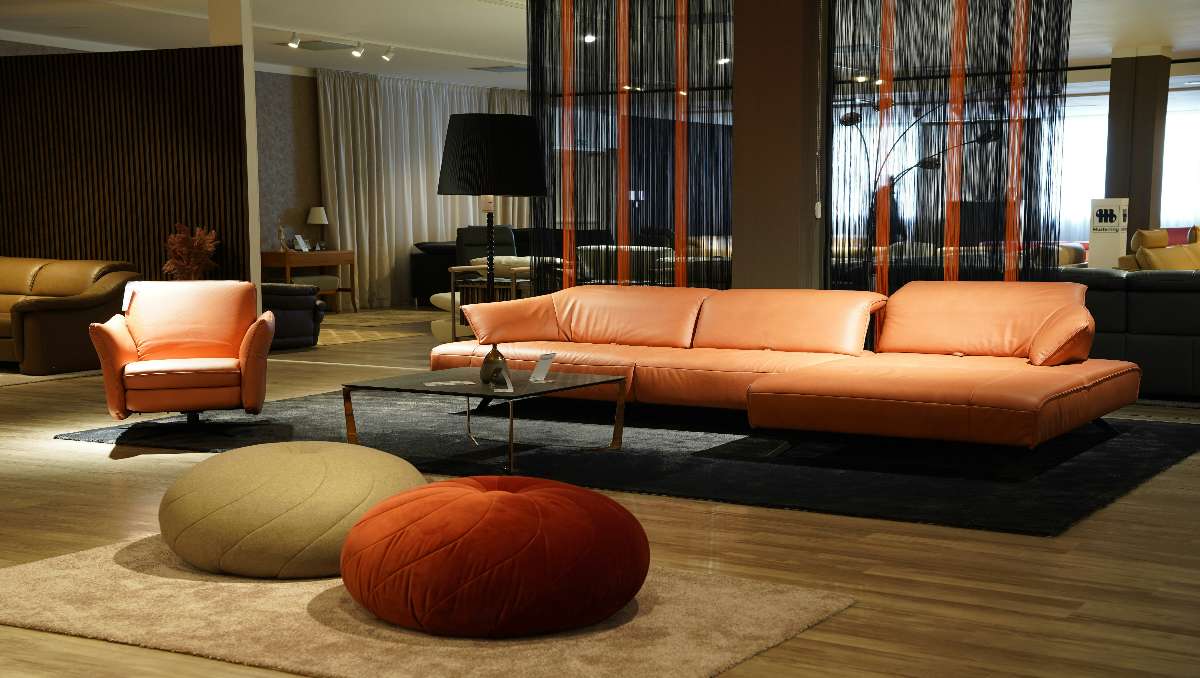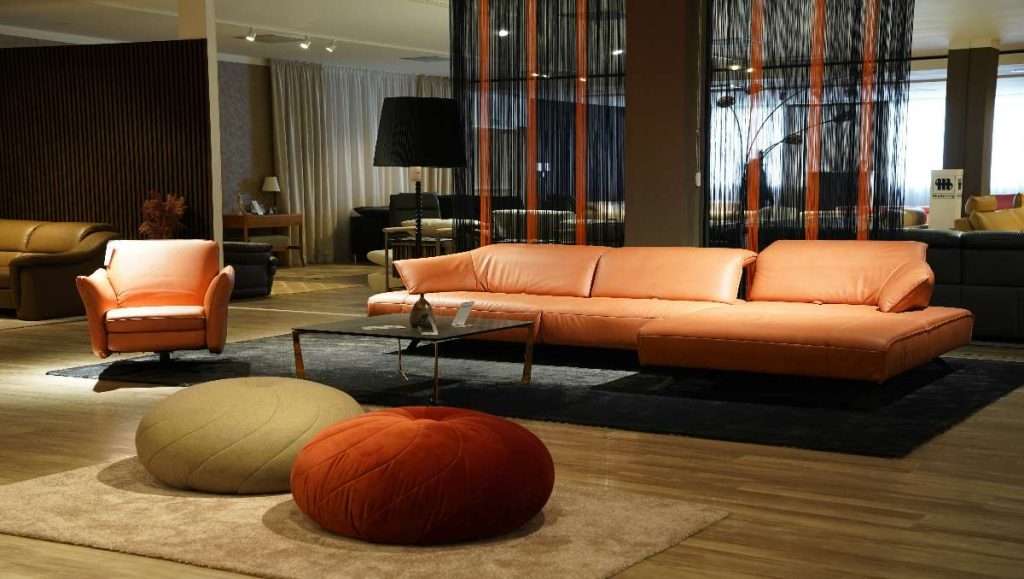
Understanding the markup on furniture can feel like a mystery, with prices often varying widely from one store to the next. Furniture pricing involves many factors—everything from material costs and brand reputation to the store’s location and logistics. By looking into how and why retailers price furniture the way they do, you can make informed decisions, spot fair deals, and even save money on larger purchases.
Key Takeaways
- Markup on furniture is influenced by factors like material quality, brand reputation, and store location.
- Retail pricing strategies, including keystone and psychological pricing, play a big role in final costs.
- There are specific times and ways to negotiate on furniture for potential savings.
- Recognizing fair markup helps avoid overpaying and ensures value for money.
This guide breaks down the essentials of furniture markup, covering pricing strategies, factors that influence costs, and tips for spotting a good deal.
What Does Markup Mean?
Retailers apply a markup to furniture to cover operational costs like rent, staffing, and other expenses while ensuring a sustainable profit. This markup allows them to keep their stores running smoothly and offer a variety of products to customers.
The markup formula is simple: subtract the product’s cost from its selling price, divide that amount by the cost, and multiply by 100 to get the percentage.
For example, if a sofa costs $400 to produce and sells for $700, the markup is calculated as:
((700 – 400) / 400) × 100 = 75%
This tells retailers how much they’re charging over the initial cost. Markup percentages can vary depending on the product and business goals, helping retailers set prices strategically.
Markup vs. Profit Margin
While markup and profit margin are related, they measure different things. Markup shows how much more a product is sold for compared to its cost, while profit margin indicates what percentage of revenue turns into profit after covering all expenses.
For example, a round table sold for $500 with a cost of $300 has a markup of 67%, but a profit margin of 40%. Profit margin is crucial for understanding overall profitability, as it shows how much of each sale contributes to the bottom line. Both metrics help retailers make pricing decisions, but profit margin provides a clearer picture of financial health.
Average Markup Rates in the Furniture Industry
Markup rates in the furniture industry vary widely, influenced by factors such as product type, brand positioning, and market demand. Understanding these variations can help consumers make informed purchasing decisions.

Typical Markup Percentages for Furniture
Furniture retailers often apply markups ranging from 20% to 400% over the wholesale cost. This broad range accounts for operational expenses, desired profit margins, and market positioning. For instance, high-end or custom furniture pieces may have higher markups due to premium materials and craftsmanship. Conversely, mass-produced items might have lower markups to remain competitive. These percentages are not fixed and can fluctuate based on economic conditions and consumer demand.
How Markup Rates Differ by Furniture Type
Different furniture categories exhibit varying markup rates. High-demand items like sofas and dining sets often have higher markups, reflecting their popularity and essential role in home settings. In contrast, smaller items such as side tables or stools may have lower markups due to lower production costs and competitive pricing strategies. Additionally, luxury or designer pieces typically carry higher markups, emphasizing exclusivity and brand value. Understanding these distinctions helps consumers assess pricing and value across different furniture types.
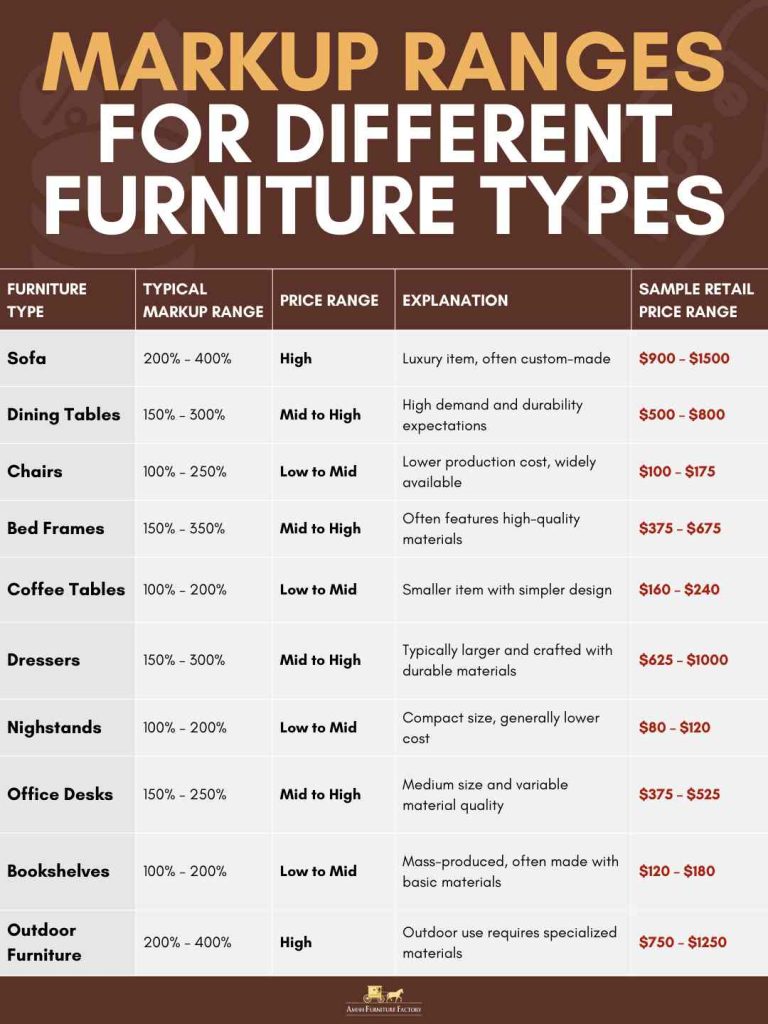
Sources:
Factors That Influence Markup on Furniture
Markup on furniture is influenced by a range of factors, from the cost of materials to store location. Each of these factors contributes to the final price customers see in stores.
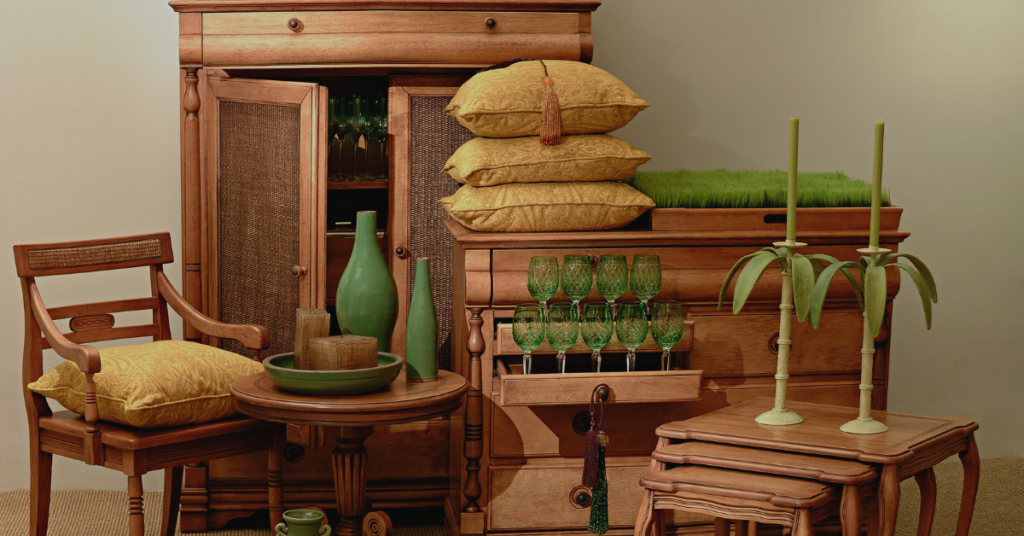
Material Costs and Quality
The type and quality of materials directly affect the markup on furniture. High-quality materials, like solid wood or genuine leather, typically come with higher production costs, which leads to a higher markup. In contrast, furniture made from budget materials, such as particle board, usually has a lower markup to keep it affordable. Retailers price these items with their target market in mind, balancing quality with price expectations.
Brand Reputation and Demand
Furniture brands with a strong reputation often command higher markups because customers associate them with quality and prestige. Well-known brands can add value through design, durability, and after-sales service, all of which justify a higher price. High demand also allows brands to maintain higher markups, as customers are more willing to pay a premium. Conversely, lesser-known brands or generic options may have lower markups to attract budget-conscious buyers.
Location and Store Type
Where a store is located plays a role in the markup of its furniture. Stores in high-rent areas, such as city centers, often pass on their higher operational costs to customers through markups. Additionally, store type influences markup; boutique or designer furniture stores tend to have higher markups than big-box retailers. These markups help cover the additional costs associated with upscale showrooms and personalized service.
Shipping and Handling Costs
Shipping and handling expenses can add significantly to furniture costs, especially for larger, heavier items. Retailers account for these logistics costs in their markup, ensuring they cover expenses like transportation, warehousing, and delivery services. Imported furniture may have even higher markups due to customs fees and extended shipping routes. Local retailers might have lower shipping-related markups, but handling costs still influence the final price customers pay.
Comparing Markup on Furniture: Retail vs. Wholesale
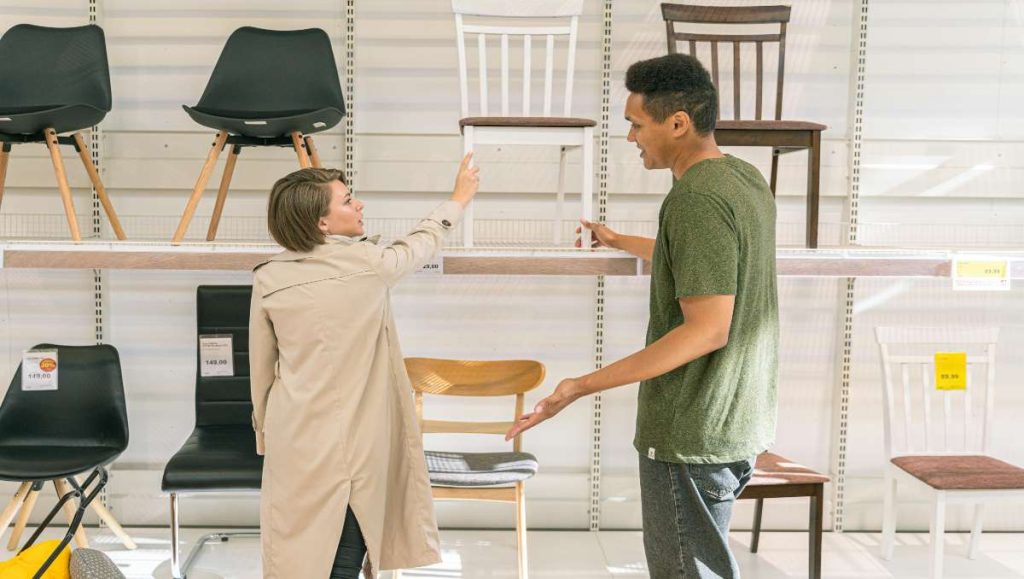
Furniture markup is typically higher in retail than wholesale due to different pricing strategies. Wholesalers sell in bulk to retailers, applying a modest markup to profit from high-volume sales. Retailers, however, purchase at wholesale prices and add their own markup to cover additional costs like rent, staffing, and marketing. They also invest in creating a more engaging shopping experience, with showrooms and customer service, which contributes to the higher final price. As a result, consumers pay more at retail stores for the added convenience and selection.
You might be interested to learn the comparison between Amish furniture vs. factory-made.
Common Retail Pricing Strategies for Furniture
Furniture retailers use different pricing strategies to appeal to customers while covering their costs and securing profits. These strategies help stores position their products in ways that resonate with different types of buyers.
Keystone Pricing
Keystone pricing is a straightforward approach where retailers double the wholesale cost to set the retail price. This method provides a simple way to ensure that the business covers its expenses and makes a profit. It’s commonly used for items with predictable demand and stable production costs. While keystone pricing offers a standard markup, some stores may adjust it based on market conditions or product uniqueness.
Price Anchoring and Discounts
Price anchoring involves displaying a high original price next to a discounted one, creating a sense of savings. This technique makes the discount look more appealing and convinces customers they’re getting a better deal. Anchoring is especially effective with larger furniture items where the difference in price can feel significant. It’s a strategy that taps into customer psychology, encouraging more favorable purchase decisions.
Psychological Pricing
Psychological pricing is designed to make prices appear more attractive, often by setting them just below a round number, like $499 instead of $500. This small change in pricing makes products seem cheaper, even if the difference is minimal. Such pricing techniques appeal to customers’ instincts for value, drawing attention to the “lower” price point. Retailers often apply psychological pricing across a range of products to subtly influence purchase behavior.
How to Spot a Fair Furniture Markup

To spot a fair furniture markup, start by comparing prices from different stores or websites for the style or brand you’re interested in. This will help you see what’s typical and identify prices that seem too high or low.
Check reviews to ensure the quality matches the price. Higher markups can be reasonable if the furniture is durable, uniquely designed, or made from premium materials. Custom or handmade items usually have higher prices due to the work involved, and well-known brands may justify extra costs with warranties or better service. However, be cautious of overpriced furniture with low-quality materials or little product info, and watch for steep discounts that may signal an inflated original price.
When shopping, it’s also possible to negotiate for better deals, especially on larger items or display models. Research average prices to understand typical markups, which will give you a stronger position to ask for a discount. Inquire about discounts for floor models, cash payments, or buying multiple pieces. Shopping during major sales like Memorial Day, Labor Day, or year-end clearance events can also help you find good deals.
Get your hands on quality furniture at a price that fits your budget. Browse our discounted options now to find timeless pieces at incredible value! Shop Now
Conclusion
Understanding furniture markup gives you insight into the factors that shape retail prices and helps you make informed purchasing decisions. Recognizing different pricing strategies and knowing when and how to negotiate can save you money while ensuring quality. Whether you’re buying a high-end piece or a simple chair, research and timing are key. By being aware of fair pricing, you can make purchases with confidence.
FAQs
How can I calculate the markup percentage for a furniture item I’m interested in?
To calculate markup, subtract the original cost from the retail price, divide the result by the original cost, and multiply by 100. This percentage shows how much extra is added to the initial price. Knowing this can help you evaluate if the markup is reasonable.
Do online furniture stores have lower markups than physical stores?
Online stores often have lower markups because they avoid costs associated with physical showrooms, such as rent and in-store staff. These savings can translate into lower prices for customers. However, online stores may charge additional fees for delivery and returns.
How does furniture markup compare to other retail products?
Furniture markup is typically higher than that of everyday items like electronics or clothing due to its higher production and handling costs. Additionally, furniture has a longer selling cycle, which requires a larger markup to cover store expenses. This allows retailers to maintain profitability over longer sales periods.
Are custom furniture pieces marked up more than mass-produced items?
Yes, custom furniture often has higher markups because of the time, skill, and unique materials required. This personalized approach involves more labor and attention to detail, raising production costs. Mass-produced items, in contrast, benefit from economies of scale, keeping their markups lower.
Why do furniture stores have high markups on delivery and assembly fees?
Delivery and assembly involve logistics, labor, and sometimes specialized handling, especially for larger items. These services add operational costs that stores pass on to customers. The markup on these fees covers labor and ensures safe transport and assembly of furniture.
